I've done too many 777s.
The next plane will be the Airbus
NEW FEATURE ADDED:
- Spoilerons roll control support (only works when the plane is off the ground)
About Boeing 777

The Boeing 777, commonly referred to as the Triple Seven, is an American long-range wide-body airliner developed and manufactured by Boeing Commercial Airplanes. The 777 is the world's largest twinjet and the most-built wide-body airliner. The jetliner was designed to bridge the gap between Boeing's other wide body airplanes, the twin-engined 767 and quad-engined 747, and to replace aging DC-10 and L-1011 trijets. Developed in consultation with eight major airlines, the 777 program was launched in October 1990, with an order from United Airlines. The prototype aircraft rolled out in April 1994, and first flew in June of that year. The 777 entered service with the launch operator United Airlines in June 1995. Longer-range variants were launched in 2000, and first delivered in 2004.

An Emirates 777-300ER
The Triple Seven can accommodate a ten–abreast seating layout and has a typical 3-class capacity of 301 to 368 passengers, with a range of 5,240 to 8,555 nautical miles (9,700 to 15,840 km; 6,030 to 9,840 mi). The jetliner is recognizable for its large-diameter turbofan engines, raked wingtips, six wheels on each main landing gear, fully circular fuselage cross-section, and a blade-shaped tail cone. The 777 became the first Boeing airliner to use fly-by-wire controls and to apply a carbon composite structure in the tailplanes.
The original 777 with a maximum takeoff weight (MTOW) of 545,000–660,000 lb (247–299 t) was produced in two fuselage lengths: the initial 777-200 was followed by the extended-range -200ER in 1997; and the 33.25 ft (10.13 m) longer 777-300 in 1998. These have since been known as 777 Classics and were powered by 77,200–98,000 lbf (343–436 kN) General Electric GE90, Pratt & Whitney PW4000, or Rolls-Royce Trent 800 engines. The extended-range 777-300ER, with a MTOW of 700,000–775,000 lb (318–352 t), entered service in 2004, the longer-range 777-200LR in 2006, and the 777F freighter in 2009. These second-generation 777 variants have extended raked wingtips and are powered exclusively by 110,000–115,300 lbf (489–513 kN) GE90 engines. In November 2013, Boeing announced the development of the third generation 777X (variants include the 777-8, 777-9, and 777-8F), featuring composite wings with folding wingtips and General Electric GE9X engines, and slated for first deliveries in 2026.
As of 2018, Emirates was the largest operator with a fleet of 163 aircraft. As of March 2025, more than 60 customers have placed orders for 2,352 777s across all variants, of which 1,748 have been delivered. This makes the 777 the best-selling wide-body airliner, while its best-selling variant is the 777-300ER with 833 delivered. The airliner initially competed with the Airbus A340 and McDonnell Douglas MD-11; since 2015, it has mainly competed with the Airbus A350. First-generation 777-200 variants are to be supplanted by Boeing's 787 Dreamliner. As of May 2024, the 777 has been involved in 31 aviation accidents and incidents, including five hull loss accidents out of eight total hull losses with 542 fatalities including 3 ground casualties.
About Boeing 777-200ER
The B-market 777-200ER ("ER" for Extended Range), originally known as the 777-200IGW (increased gross weight), has additional fuel capacity and an increased MTOW enabling transoceanic routes. With a 658,000 lb (298 t) MTOW and 93,700 lbf (417 kN) engines, it has a 7,065 nmi (13,084 km; 8,130 mi) range with 301 passenger seats in a three-class configuration.It was delivered first to British Airways on February 6, 1997. Thirty-three customers received 422 deliveries, with no unfilled orders as of 2019.
As of 2018, 338 examples of the -200ER are in airline service. It competed with the A340-300. Boeing proposed the 787-10 to replace it. The value of a new -200ER rose from US$110 million at service entry to US$130 million in 2007; a 2007 model 777 was selling for US$30 million ten years later, while the oldest ones had a value around US$5–6 million, depending on the remaining engine time.
The engine can be delivered de-rated with reduced engine thrust for shorter routes to lower the MTOW, reduce purchase price and landing fees (as 777-200 specifications) but can be re-rated to full standard. Singapore Airlines ordered over half of its -200ERs de-rated.

A Singapore Airlines 777-200ER

A British Airways 777-200ER. The aircraft was damaged beyond repair after the crash of British Airways Flight 38
About Vietnam Airlines

Vietnam Airlines (Vietnamese: Hãng hàng không Quốc gia Việt Nam, lit. 'Vietnam National Airlines') is the flag carrier of Vietnam. The airline was founded in 1956 and later established as a state-owned enterprise in April 1989. Vietnam Airlines is headquartered in Long Biên district, Hanoi, with hubs at Noi Bai International Airport in Hanoi and Tan Son Nhat International Airport in Ho Chi Minh City. The airline flies 117 routes across 19 countries, excluding codeshared services.
From its inception until the early 1990s, Vietnam Airlines was a minor carrier within the aviation industry as it was hampered by a variety of factors including the socio-economic and political situation of the country. With the government's normalization of relations with the United States, the airline could expand, improve its products and services, and modernize its ageing fleet. In 1996, the Vietnamese government brought together 20 service companies to form Vietnam Airlines Corporation, with the airline itself as the centrepiece. In 2010, the corporation was restructured into a limited liability company and renamed Vietnam Airlines Company Limited. A seven-seat management board, appointed by the Vietnamese Prime Minister, oversees the company.
As passenger transport constitutes its core activity, Vietnam Airlines plays a crucial role in the economic development of the country. It owns 100% of Vietnam Air Service Company – a regional airline in southern Vietnam and almost 99% of the low-cost carrier Pacific Airlines. In addition, the corporation earns revenue from airline catering and the maintenance and overhauling of aircraft through a number of its subsidiaries, including Vietnam Airlines Engineering Company and Vietnam Airlines Caterers. The company has also diversified its investments in the aircraft-leasing and airport ground-servicing industries, and is looking to manufacture aircraft components. It controls and operates a cargo division, Vietnam Airlines Cargo.
Vietnam Airlines became a member of SkyTeam in June 2010, making it the first Southeast Asian carrier to have joined that alliance. As of September 2021, the State's stake in Vietnam Airlines is 86.34%, All Nippon Airways holds 5.62%, being a strategic shareholder of the national flag carrier.

An old Vietnam Airlines Tupolev Tu-134B

An old Vietnam Airlines B767-300ER
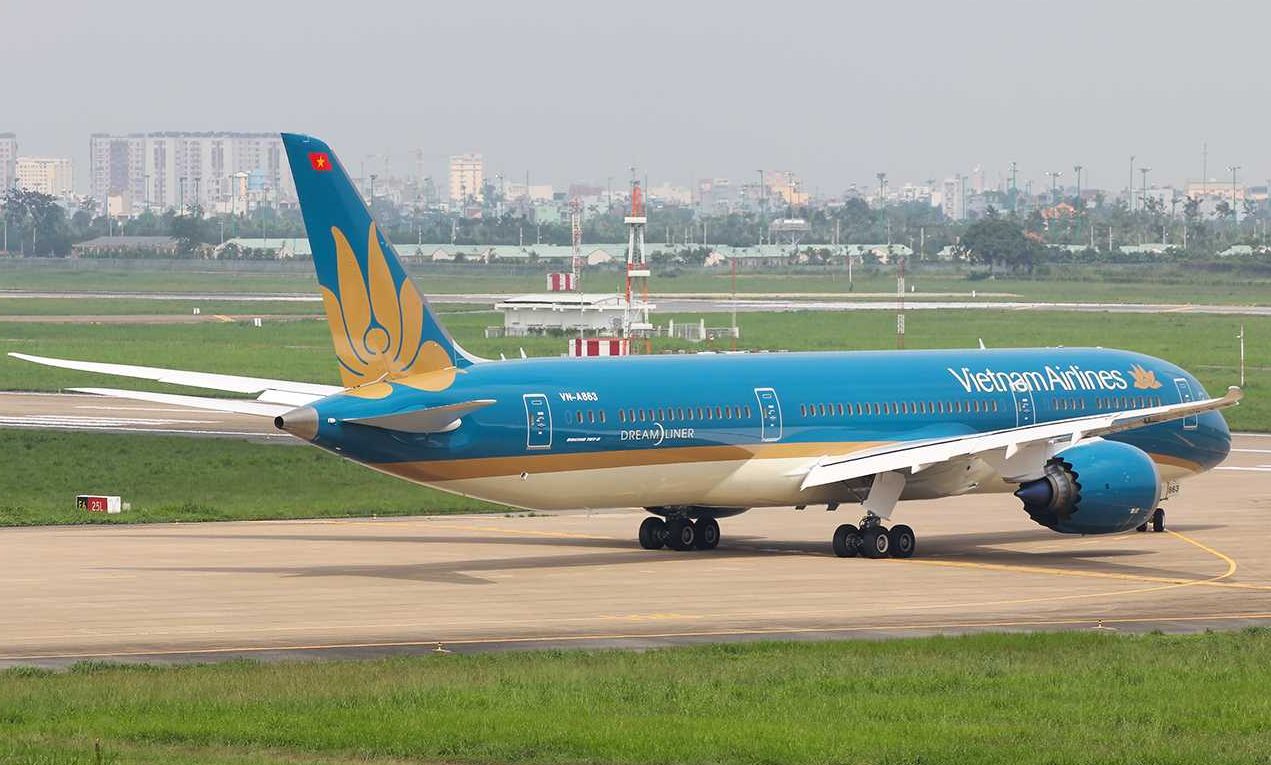
A Vietnam Airlines B787-9
History of VN-A146
VN-A146 is a Boeing 777-26K(ER) and the 486th 777 built. It made its first flight on 20 July 2004 and was delivered to Vietnam Airlines on 28 July. It was powered by two PW4084 engines and was configured as C32Y306 until 2010. The aircraft suffered an engine fire at Narita Airport, Tokyo on 30 July 2008 after landing. The incident did not cause any casualties but forced the aircraft to be grounded for repairs. The aircraft later returned to service. It was reconfigured as C27W54Y228 from 2010. In late 2014, to celebrate Vietnam Airlines was ranked as a 4-star airline in the world by Skytrax. VN-A146 and Another 777-200ER, VN-A143, was painted in a new livery with white and yellow curves on the underbelly and the golden lotus logo was enlarged and changed to Helvetica Neue font instead of the old Aperto font to create a more professional feel, and this is also the color that Vietnam Airlines' 787 and A350 aircraft have used to date. However, as the 777 fleet was more than 13 years old and parts became scarcer while the new 787 and A350 aircraft were 20% more fuel efficient than older 777 aircraft, Vietnam Airlines grounded all 777 aircraft as of July 28, 2017. This VN-A146 left Vietnam Airlines' fleet on February 9, 2017 and was dismantled for parts in 2018 at Greenwood–Leflore Airport, ending a service life of 13.5 years.

The plane in the old livery landed at Tan Son Nhat International Airport.(IATA:SGN/ICAO:VVTS)

The plane in a new livery taxing at Frankfurt Rhein-Main Airport (IATA:FRA / ICAO:EDDF)
Control
Ag1 - Arm Speed brakes (requires gear down)
Ag2-4 - Strobe/Landing/Cabin Lights
Ag5 - Open front left door
AG6 - Pushback
AG8 - Engines, Nav/Taxi/Beacon lights
De-activating 8 will cut power to all lights
optional: 2 Forward doors can open(just connect them to the pistons)
Credit
Shinichi16 for the 777-200ER(PW)
Special thanks to RedTrinity for helping me with the belly of the plane and Cellado for helping me with the vertical stabilizer
some pictures of my game:



That's all, enjoy!

Specifications
Spotlights
- Cellado 5 months ago
- RedTrinity 5 months ago
- BluesynVN 5 months ago
General Characteristics
- Predecessor b777-26k
- Successors 1 airplane(s)
- Created On Android
- Wingspan 198.6ft (60.5m)
- Length 209.1ft (63.7m)
- Height 62.6ft (19.1m)
- Empty Weight N/A
- Loaded Weight 118,398lbs (53,704kg)
Performance
- Power/Weight Ratio 0.641
- Horse Power/Weight Ratio 0.025
- Wing Loading 21.3lbs/ft2 (104.2kg/m2)
- Wing Area 5,547.8ft2 (515.4m2)
- Drag Points 16325
Parts
- Number of Parts 520
- Control Surfaces 11
- Performance Cost 2,700

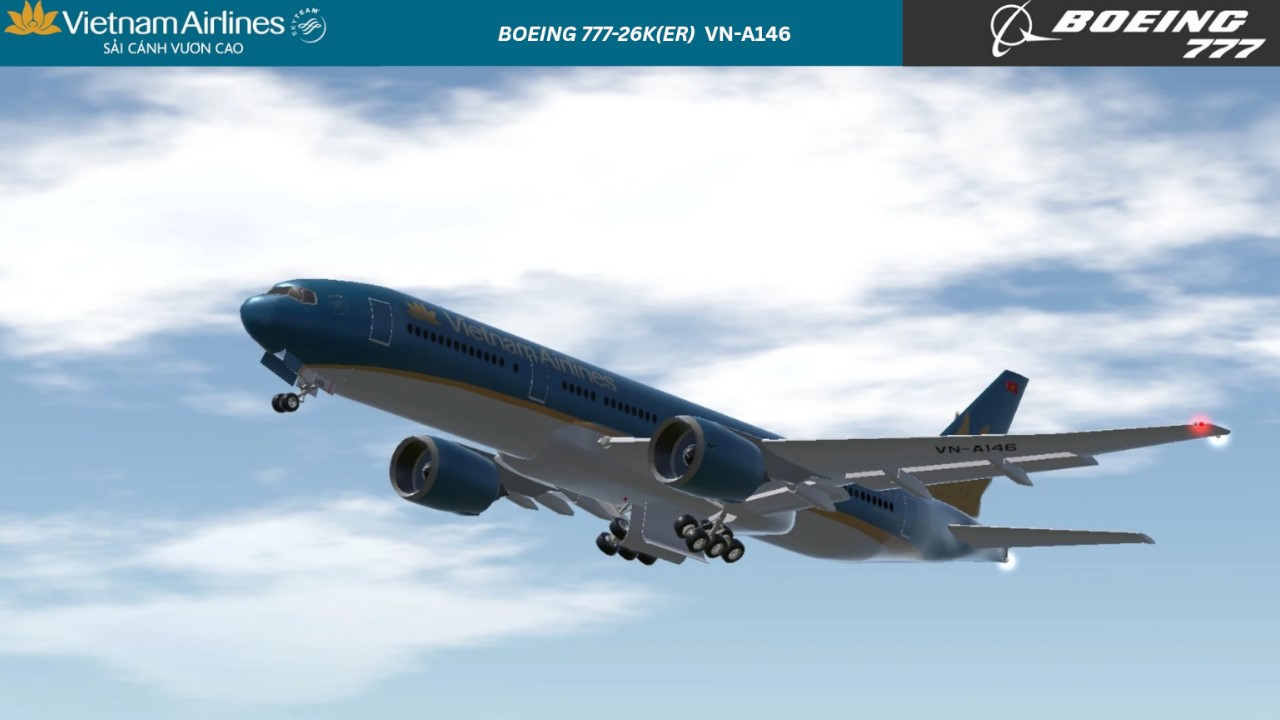
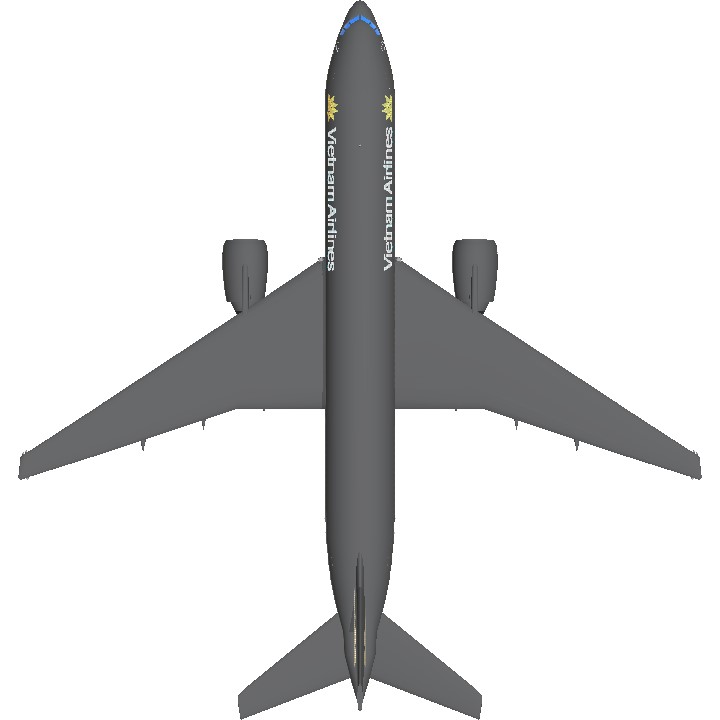
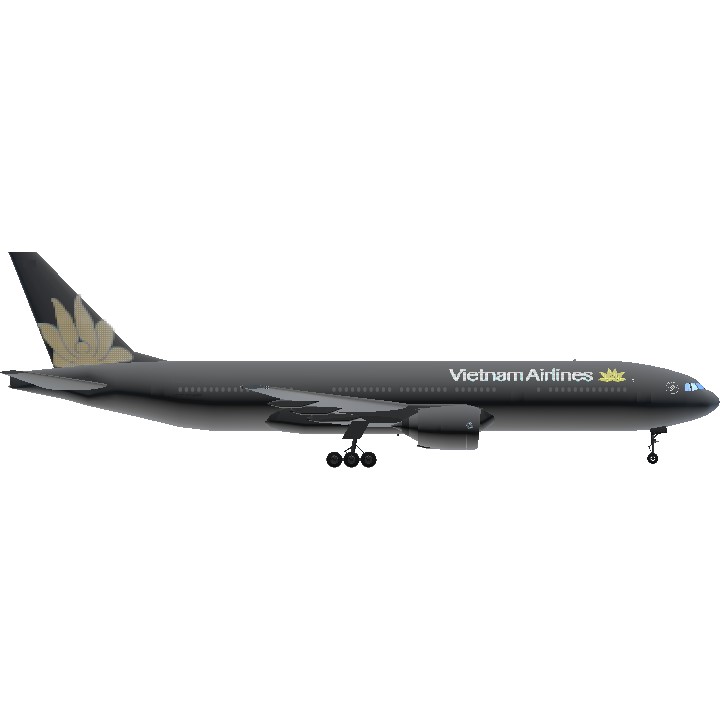
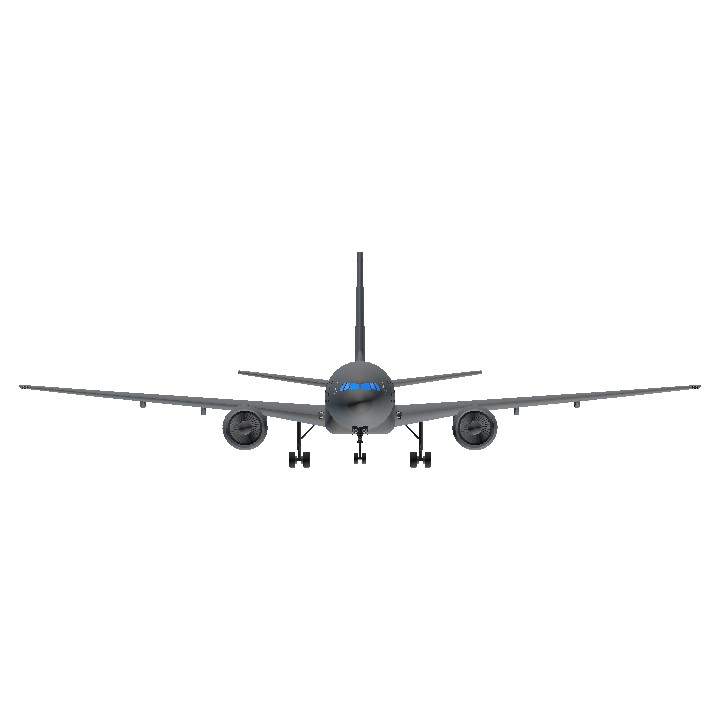
@Suayos
@CaptainBrayden
@VeeOne
@FLANEFANCY1235
Tagged:
@RedTrinity
@Cellado
@BluesynVNA
My beloved airliner gng
@Dreamlinerboi YESSSSSSSSSSSSSSSSSSSSSSSSSSSSSSSSS VNNNNNNNNNN